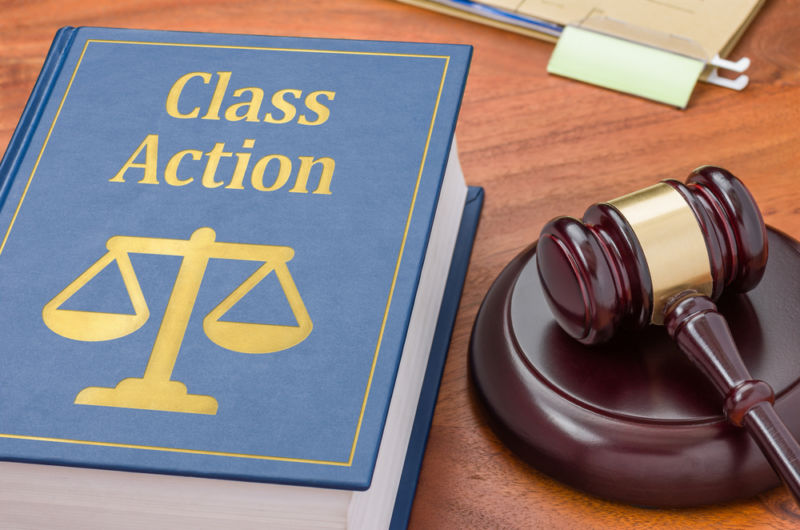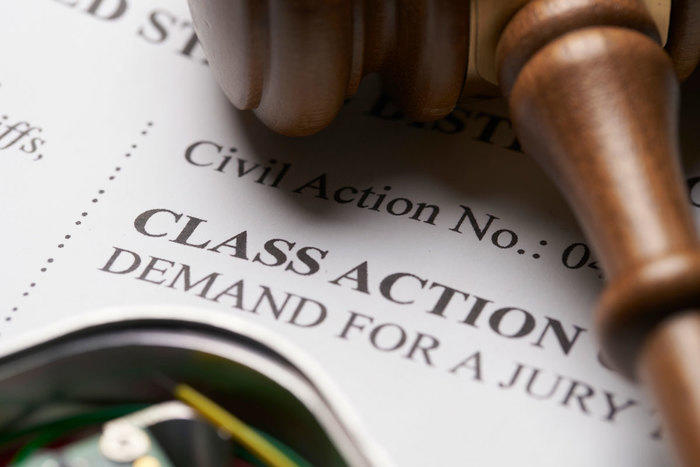Exploring the Assertio Class Action Lawsuit: Your Comprehensive Guide
Checking Out Course Activity Claims: What You Required to Know
Course action suits have become progressively prevalent in today's legal landscape, with individuals signing up with pressures to look for redress against corporations and organizations. In this conversation, we will explore the ins and outs of class activity claims, clarifying their meaning, the requirements for filing, and the possible advantages and disadvantages involved. Additionally, we will dive into the steps involved in a course action suit and examine some current site situations that have shaped this location of legislation. Understanding the intricacies and nuances of course action lawsuits is critical for any individual seeking justice in a cumulative manner, so allow's begin our expedition together.
The Meaning of Course Action Claims
Exactly what is the definition of a class activity lawsuit? A class activity lawsuit is a lawful action filed by a team of people that have similar insurance claims versus a defendant. It enables a big number of individuals, known as the class participants, to collaborate and pursue their insurance claims jointly, instead of each specific filing a separate suit. When the number of potential plaintiffs is too large for private claims to be sensible, Course activity lawsuits are generally brought. They are typically utilized in situations including customer security, product obligation, safeties scams, and work problems.
One of the key components of a course activity claim is that the lead plaintiff, also recognized as the course rep, stands for the rate of interests of all the course members. The court appoints the lead complainant based upon their capability to relatively and effectively represent the course. The lead plaintiff works carefully with the course activity attorney to look for and develop a strong instance payment or other solutions in behalf of the whole course.
In order for a class activity suit to continue, the court needs to certify the course. This implies that the court determines that the legal action satisfies certain needs, such as numerosity (a large adequate number of course members), commonness (typical inquiries of legislation or reality), typicality (the insurance claims of the lead complainant are normal of the class), and adequacy of depiction (the lead plaintiff and course guidance can representing the course's interests) As soon as the class is licensed, the suit can relocate forward, and any kind of judgment or settlement reached will relate to all class participants unless they choose to opt-out.
Class activity lawsuits serve a vital objective in offering accessibility to justice for individuals who might not have the resources to pursue their cases separately. They additionally promote effectiveness in the lawful system by consolidating similar cases into a single activity, reducing the problem on both the court and the events involved.
Demands for Filing a Class Activity Claim

Another requirement is that the class should be adequately many. The specific variety of course participants needed might differ depending on the jurisdiction and the nature of the case. It is normally anticipated that the course has to be huge sufficient that joining all the specific complainants into a single claim is more effective than having several separate suits.
Additionally, it is necessary that the class representative, who is the specific or entity bringing the legal action in support of the course, has normal insurance claims and defenses to those of the class participants. The representative should likewise be able to sufficiently and rather represent the interests of the whole class.

Benefits and Drawbacks of Course Activity Suits
Class activity claims use both benefits and drawbacks for complainants and accuseds involved in the lawful procedure. On the one hand, one of the significant benefits of class activity claims is that they offer a economical and effective way for people with similar claims to seek justice collectively. By consolidating countless comparable cases right into one suit, course activities improve the lawful process and conserve time and resources for both defendants and complainants.
Another advantage of class activity lawsuits is that they enable individuals with restricted sources to seek payment for their problems. In cases where the prospective recuperation is small, private lawsuits may not be financially practical. Nonetheless, by joining forces in a course activity, plaintiffs can pool their sources and enhance their opportunities of getting a fair resolution.
Moreover, course actions can advertise social change by holding firms responsible for their activities. By accentuating prevalent transgression or faulty items, course actions can push companies to transform their practices, improve item security, or implement reforms.
However, course activities also have downsides. One prospective negative aspect is that private plaintiffs may have limited control over the lawsuits process and the ultimate outcome of the case. The lead plaintiffs and their lawyers usually make vital choices in support of the whole course, which might not constantly line up with the private rate of interests of each class member.
In addition, course activities can be lengthy and taxing, usually taking years to get to a resolution. The complexity and size of these lawsuits can bring about hold-ups and extended litigation, which can be annoying for both defendants and plaintiffs looking for a timely resolution.
Actions Associated With a Class Activity Claim
The procedure of a class activity claim commonly starts with the identification of a potential class and the filing of an issue. Once a group of individuals that share similar claims versus an accused is identified, the lead complainant, or course representative, files an issue in behalf of the entire class. This issue details the supposed misbehavior and looks for damages or various other relief for all participants of the class.
After the issue is submitted, the court will certainly establish whether the case satisfies the demands for class qualification. These requirements typically include numerosity (a huge enough class), commonness (comparable legal insurance claims), typicality (the lead complainant's claims are representative of the course), and competence of depiction (the lead plaintiff and their attorney can sufficiently stand for the class's rate of interests)
If the court licenses the class, notice is supplied to all possible class members, offering them the possibility to opt-out if they wish to pursue their very own specific claims - BioVie class action lawsuit. If an adequate number of course members stay, the situation will certainly proceed to the exploration phase, where both sides collect evidence and info relevant to the cases
Complying with discovery, the events might participate in negotiation arrangements or continue to test. If the instance mosts likely to test and the course dominates, the court will certainly establish the ideal problems or alleviation to be granted to the course members.
Recent Site Class Action Lawsuits
With a strong understanding of the actions associated with a course activity suit, it is now essential to take a look at some recent landmark cases that have made a considerable impact in the legal landscape. Assertio class action lawsuit. These situations have not only shaped the means course action suits are conducted yet have actually likewise produced changes in numerous markets
One such landmark instance is the Volkswagen emissions rumor, which led to the biggest class action settlement in vehicle background. This deceptiveness influenced millions of consumers worldwide, leading to a course action suit.
Another noteworthy case is the Johnson & Johnson talc claim. Hundreds of ladies filed suits versus the business, asserting that their talcum powder items created ovarian cancer. In 2018, a court granted $4.7 billion in damages to 22 complainants. This instance raised problems regarding the safety of baby powder and prompted Johnson & Johnson to change their product labeling.
These recent landmark situations show the power of course activity legal actions in holding corporations responsible for their actions and seeking justice for afflicted people. They function as instances of just how course activity lawsuits can produce significant modifications and safeguard the legal rights of customers.
Final Thought
In final thought, class action legal actions are a lawful mechanism that allows a team of individuals to collectively look for justice for a typical complaint. Recognizing the demands and steps involved in submitting a class activity claim is vital Archer-Daniels-Midland class action lawsuit for individuals looking for to seek this legal method.
One of the essential elements of a course action legal action is that the lead complainant, additionally known as the course representative, stands for the rate of interests of all the course members.In order for a course action legal action to proceed, the court must accredit the class. This indicates that the court determines that the suit meets specific needs, such as numerosity (a huge adequate number of class members), commonness (common inquiries of law or reality), typicality (the claims of the lead complainant are typical of the class), and competence of representation (the lead complainant and course guidance are qualified of standing for the class's rate of interests) Once the class is accredited, the lawsuit can move onward, and any judgment or settlement got to will use to all course members unless they pick to opt-out.
The process of a class action legal action usually starts with the recognition of a potential class and the declaring of an issue.